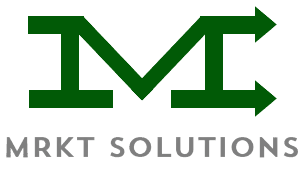Asset Based Lending
What are asset based loans?
Asset Based Lending, also known as ABL, is a loan that is secured by collateral owned by the borrower. Unlike other security-based loans, the asset-based loan is for businesses, not individuals. Businesses with many valuable assets can take advantage of these loans to overcome cash crunches and address urgent needs for funds.
Asset-based lending can refer to any loan given with an asset as collateral. A business can use its inventory, accounts receivables, equipment, plant and property, marketable securities, or any other asset as collateral for this loan. Inventory and accounts receivables are the most commonly used assets to secure this type of financing.

How do asset based loans work?
How an asset-based loan works:
Step 1- The borrower identifies an asset that he wishes to place for the asset-based loan. This asset becomes the collateral for the loan. The borrower may place a single asset as collateral or utilize multiple assets if he needs a bigger loan. The assets must be owned by the borrower (e.g.: equipment, property, plant) or future earnings (e.g.: accounts receivables)
Step 2- The lender evaluates the asset value. A percentage of the asset value is offered as loan. The lender determines the percentage after assessing the assets. Typically, this could range from 70% to 90% of asset value. The terms and conditions of the loan hinge upon the nature of the asset that is collateral and also its value. (Note: Liquid collaterals like security are preferred since they can be readily converted into cash. The lender may offer a bigger percentage of the asset value as a loan with liquid assets than with physical assets.)
Step 3 – The lender determines the interest rate based on the asset itself as well as other factors. Some such factors are: credit history, cash flow, and the number of years the business has been operating.
Step 4 – The business owner understands the terms of the loan before he signs up for it. The funds may be made available to the borrower or directly to the supplier. For example, when the loan is taken to fund materials purchase, the lender may directly pay the supplier/ seller
Step 5 – The business repays the loan in installments as agreed and laid out in the loan document
Step 6 – When the final installment is paid, the lien on the collateral (that the lender holds) is lifted. If the business defaults on the loan repayment, the lender can exercise a right over the assets and take them over.
Who qualifies for Asset Based Loans?
Usually, it is small and medium-sized businesses that opt for asset-based financing. However, any business that has an asset to put up as collateral can avail of this funding option.
The business must own the asset and it must have sound financials to make it worthwhile for the lender to take a risk by loaning funds.
Businesses ideally suited for these loans have substantial assets or assets of high value.
benefits of Asset Based Loans
- These loans infuse cash into a business that needs funds to support growth or that is in the middle of a turnaround
- Asset-based loans are very useful for small businesses that need extra capital to address unexpected peaks in demand
- Businesses can maximize the utilization of assets in which capital is locked up by putting them up as collateral
- A number of assets both movable and immovable, physical assets, and earnings can be used for these loans, which makes these loans very flexible
- You can spread the cost of a big business purchase over a period and lower the impact of the expense on your financials
- When there is not enough cash flow/ liquidity in the business to back up a loan, asset-based financing helps
- For new businesses that do not have a long history to show, asset-based financing is a lifeline. These loans are easier to get since the lender’s risk is mitigated by the collateral
- These are approved quicker than unsecured loans and the restrictions applicable may be fewer too. This makes asset-based loans ideal for situations when funds are needed urgently
- Asset-based financing lets your business stay debt-free in a way while it gets the finances it needs from a third-party
disadvantages of Asset Based Loans
- Lenders prefer larger loans because the cost of monitoring the loan is the same irrespective of the magnitude of funds borrowed. Businesses may find it challenging to get these loans when they need smaller amounts
- Your asset quality determines the ease of getting an asset-based loan. If you wish to use your accounts receivables as collateral, their creditworthiness impacts loan approval
- In the latter case, the lender may want your customers to directly pay them instead of you. This means the lender has control over your cash flows
- Administration costs and other fees add up to make this type of financing more expensive than traditional loans
- You risk losing your asset if you cannot repay the loan
How can a business qualify for Asset based loans?
Step 1 -Determine the assets that you are willing and able to pledge. The total value of your asset also impacts the total loan amount that you can avail of so choose accordingly. Take into account the total loan that you need and list out your assets that can match this amount. Use can use either one single asset as the collateral for your loan or combine multiple assets to secure the loan.
Step 2 – Identify a suitable lender and understand the requirements they have for an asset-based loan application
Step 3 – Gather all the necessary details. These may include professionally prepared financial statements and your receivables data apart from other verification documents. A stable balance sheet and strong asset portfolio help convince the lender that you are a good risk
Step 4 – Complete the loan application along with all the data required by the lender
Step 5 – Support the verification/ inspection processes that the lender carries out as a precursor to loan approval
Key Points

Key Point 01

Key Point 02

Key Point 03
An example of an Asset Based Loan
Let’s assume company ABC is in urgent need of funds to address seasonal demand. As a new business in the niche, the business faces challenges in availing of low-cost unsecured loans. Asset-based financing is a good option.
The business has two prime assets that it can pledge:
Accounts Receivables valued at $100,000
Plant and machinery valued at $120,000
The lender is willing to give up 90% of the value for the more liquid asset, Accounts Receivables, and 70% if the plant and machinery are put up as collateral. The business can avail $90,000 as loan but give the lender lien over its cash flow. Or it can take $84,000 as loan and give the lender a right over the immovable assets.
The business is confident about its customers paying on time and so it avails of the $90,000 asset-based loan and invests in new machinery to improve supply.
See what you qualify for today
Frequently Asked Questions
The lender determines the rate of interest that he will charge for the loan. Generally, these rates vary between 7 and 17% and they depend on several factors including:
- the business financials
- the amount required as loan
- the quality of collateral
- the term of the loan
- the number of years the business has been operational
Banks and financial institutions offer asset-based loans. We are one of the pioneers in asset-based financing with a reputation for easy and quick loan processing and approval.
The amount of asset-based financing you can get approved hinges heavily upon the value of the underlying asset. Lenders have a fixed percentage that they offer for different types of assets. Liquid assets may attract a higher percentage of their value as a loan since the lender can easily dispose of them if needed. Typically, lenders offer anywhere between 70 to 90% of the asset value depending on the nature of the asset and its liquidity.
The borrowing base is the amount of loan that you can avail of from your lender. To arrive at the borrowing base, the lender adds up the value of all the assets you are placing as collateral. Then a discount or margin is applied on this total value. The resultant value is your borrowing base.
Asset-based loans are given on basis of the collateral value and usually do not need your personal guarantee. This is one of the advantages of this kind of loan. However, some large banks may also insist on personal guarantees.
There are various types of assets that can be leveraged under an asset based loan. These include inventory, accounts receivable, equipment, work in process, and IP(intellectual property).
